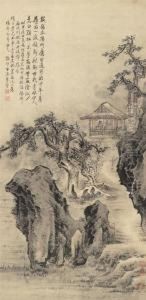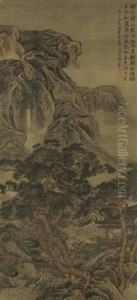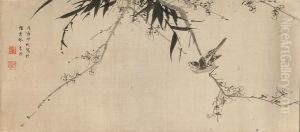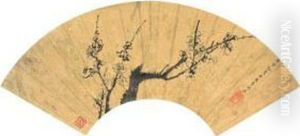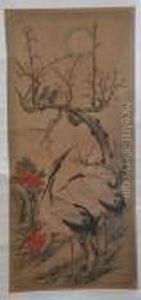Li Yin Paintings
Li Yin was a Chinese painter during the Qing Dynasty, which was the last imperial dynasty of China, lasting from 1644 to 1912. Born in the year 1610, Li Yin's artistic career unfolded during a period of significant political and cultural change, as the Ming Dynasty gave way to the Qing Dynasty. It is important to note that details about Chinese artists from this time can be sparse, and much of their biographies can be pieced together from their remaining works, historical records, and later scholarly analysis.
Li Yin is particularly known for his landscape and architectural paintings. His style followed the tradition of the Ming Dynasty, and he was adept at integrating this with the evolving tastes of the Qing period. His works typically exhibit a strong sense of composition and adept use of ink wash, which were hallmarks of traditional Chinese landscape painting.
During his lifetime, Li Yin would have witnessed the Manchu conquest of China and the establishment of the Qing Dynasty. This period was characterized by a complex intermingling of cultural traditions, as the Manchu rulers adopted many aspects of Chinese culture while also maintaining their own ethnic identity. Despite the turmoil of the time, the Qing Dynasty came to be known for its contributions to the arts and culture, including the flourishing of various schools of painting.
Li Yin's paintings were often imbued with a sense of tranquility and a deep appreciation for nature, reflecting the literati ideals of the time that emphasized personal expression and scholarly learning. His work was in demand, and he was one of the painters who managed to maintain a successful career during the transition between dynasties.
Unfortunately, little is known about Li Yin's personal life or training, and much of what is known about his work comes from the analysis of the paintings themselves and the inscriptions they sometimes bear. He passed away in 1685, leaving behind a body of work that continued to influence Chinese painting traditions. His legacy is preserved in the collections of various museums and private collectors interested in Qing Dynasty art.

